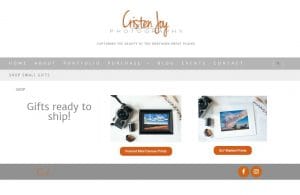In November, I shared how I came into the photography field and a little about how I capture my images.
 |
| Horses & Snow, 12/2016 |
- “…getting digitally creative comes with a bit of baggage these days. Photoshop is no longer just software beloved by photographers. Photoshop is a term that invokes a genre of photography that’s inauthentic, that’s been manipulated, and refers to images that have been fundamentally altered. A lot of us get asked when showing our work: “Did you Photoshop that?” “
- “…..developing RAW files is a very different thing than “Photoshopping” an image, and there is a difference between creative expression and deception.”
- RAW files
- Lightroom
I shoot most of my photography in RAW. Occasionally I have shot in JPEG (such as VBS at church for the slide show at the end of the day) but never, ever my landscape work. RAW files allow for more control over the final image. In this case, control is a very good thing. An artist should take control over their work.
JPEG works great if one doesn’t want to bother with editing. Many sports photographers shoot in JPEG so they can shoot fast and a lot of images. JPEGs take up much smaller data than RAW. On my memory card I can shoot around 350-400 photos in RAW, with JPEG I can shoot over 1.5k.
 |
| Relaxed, 7/2016 |
So how does one develop those RAW files?
In order to use the full capacity that RAW files give, the best program I use to bring those files to life is Adobe’s Lightroom. It is like the darkroom of old but with a whole lot less equipment, time and money.
Knowing the equipment well will help one take great photographs. Knowing how to develop those photographs will complete the art, drawing viewers into it. Knowing how to cook and create delicious food makes a chef. The presentation of that food will aid in the desire of others to eat it.
I don’t want to bore you with too much technical discussion but leave you with a few things to note.
Photographers of the past who relied on the dark room would keep safely guarded notes of how they developed certain photographs, so they could reprint them the same way.
Some questions asked in the darkroom are:
- Would it be better to expose the photograph for a few more seconds longer?
- Will the contrast come out better if it’s exposed less?
- Should I dodge certain areas so that they turn out lighter and bring more attention to it, or should I burn and create darker areas? *
I want you to see how I see.
 |
| Wind Carved Snow, 12/2015 |


Beautiful work.
Thank you so much! 🙂